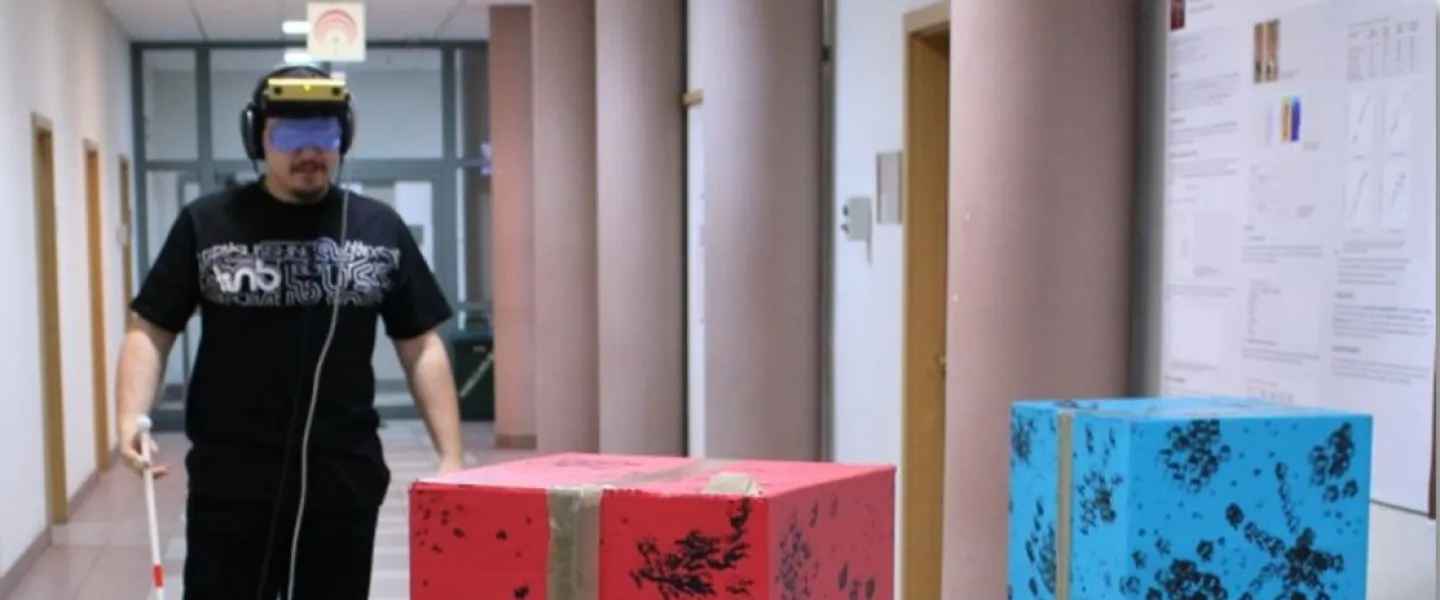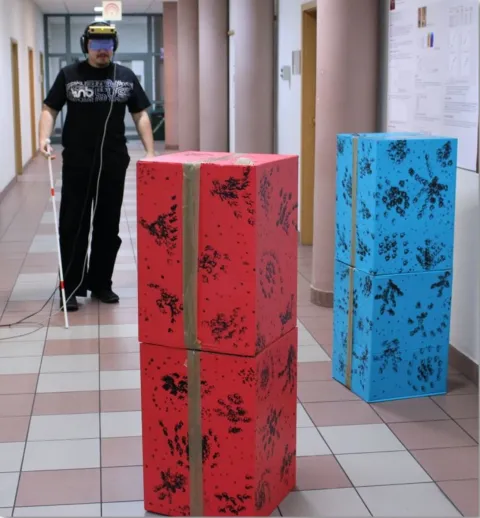
The European Union awarded close to €4 million to Sound of Vision, a project that aims to build an innovative wearable system to assist visually impaired people in navigating and perceiving the environment. The University of Iceland is the project coordinator bringing both scientific and practical experience to developing this sophisticated technology. The three-year project will make use of state of the art technologies to develop a wearable system that creates and conveys real-time auditory and haptic representations of the surrounding environment to the visually impaired.
Vision-like perception through sound and haptics
Sound of Vision will design, implement and validate an original system to assist visually impaired people by creating and conveying auditory and haptic representation of the surrounding environment. This representation will be created, updated and delivered continuously and in real time. The system will help visually impaired people navigate in almost any indoor or outdoor environments, without the need for predefined tags/sensors located in the surroundings.
The scientists involved in the project plan to develop their system based on a series of repetitive steps: 3D scanning of the environment using portable hardware and software components; processing and filtering the acquired data in order to select the relevant entities from the environment; encoding of the information about these relevant entities into abstract audio and haptic models; rendering of the models on audio and haptic output devices. All these steps will be performed in real-time, continuously, by the wearable device that represents the main result of the project. Special attention is paid to the naturalness of these alternative representations and to their informational richness and accuracy (e.g. directional localization of entities).
Sound of Vision gives exceptional attention to training
The system will be usable by any visual impaired person without other significant cognitive and physical impairments and will be helpful to a moderate extent without any training. However, it is expected that users will require training in order to achieve the full potential of the Sound of Vision system. The Sound of Vision’s approach does emphasise the role of training to achieve unprecedented levels of performance, providing a gradual, efficient, safe and cost-effective training based on 3D virtual environments. Serious games techniques will be employed to ensure both the motivation and the immersion of the users, maximizing the effects of the training process.
Researchers, caretakers, and visually impaired cooperate
9 partners from 5 European countries bring the necessary complementary competencies to design and develop the proposed system, to test the prototype, establish training protocols, in order to provide an intuitive and accessible final product.
The technological partners pack all the general and niche expertise required for the creation of Sound of Vision as IT system. The caretaking and medical partners bring in the heavy, essential expertise related to assisting and rehabilitating visually impaired people. Very important, Sound of Vision directly includes the target group in the system development: to provide initial requirements, as co-designers and for extensive experimental testing and refining of the prototypes.
Sound of Vision partners:
- University of Iceland (Iceland)
- University POLITEHNICA of Bucharest (Romania)
- Lodz University of Technology (Poland)
- Szechenyi Istvan University (Hungary)
- Technical University of Iași (Romania)
- Fondazione Istituto Per L'interscambio Scientifico (Italy)
- Icelandic National Institute For The Blind
- Visually Impaired and Deafblind (Iceland)
- Fundacja Instytut Rozwoju Regionalnego (Poland)
- Info World S.R.L. (Romania)
More info: soundofvision.net
